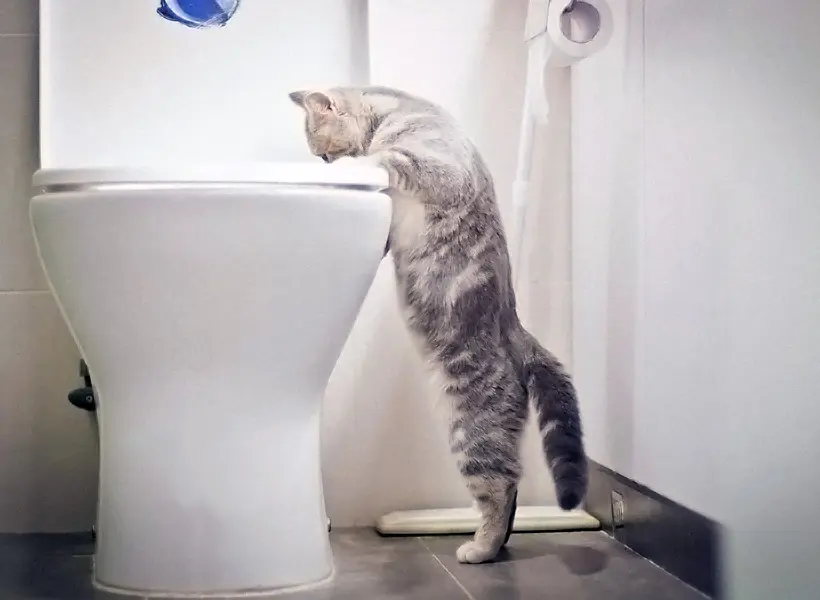Factors Why You Have to Never Dispose of Animal Waste Down the Toilet
Factors Why You Have to Never Dispose of Animal Waste Down the Toilet
Blog Article
This article which follows involving Can You Flush Dog and Cat Poo Down the Toilet? is extremely enlightening. Try it and make your own final thoughts.

When it comes to taking care of waste, particularly animal waste, many people typically consider the convenient alternative of flushing it down the bathroom. Nonetheless, this relatively easy solution can have significant repercussions for the setting and public health. In this article, we'll explore why flushing animal waste down the bathroom is a bad idea and offer alternate methods for appropriate disposal.
Introduction
Correct garbage disposal is essential for maintaining ecological sustainability and public health. While it might seem harmless to flush animal waste down the commode, it can cause different concerns, both for the atmosphere and human well-being.
Threats of flushing pet waste
Environmental impact
Flushing pet waste introduces damaging bacteria and virus right into rivers, which can adversely impact aquatic ecosystems. These virus can infect water resources and damage aquatic life, interrupting delicate environments.
Public health problems
Pet waste includes hazardous germs such as E. coli and Salmonella, which can posture serious wellness threats to people. Flushing pet waste down the commode can infect water materials, resulting in the spread of diseases and infections.
Alternatives to flushing
Instead of purging animal waste down the toilet, there are a number of alternative disposal techniques that are much more eco-friendly and hygienic.
Composting
Composting pet waste is a green way to get rid of it. By composting, raw material is broken down right into nutrient-rich dirt, which can be utilized to feed yards and plants.
Landfill disposal
Throwing away pet waste in a land fill is one more choice. While not as environmentally friendly as composting, it is a much safer option to flushing, as it avoids the contamination of water sources.
Pet dog garbage disposal systems
There are customized pet dog garbage disposal systems readily available that securely and hygienically deal with animal waste. These systems usually use enzymes to break down waste and get rid of odors.
Steps to appropriate pet waste disposal
To make certain appropriate disposal of pet waste, adhere to these steps:
Scooping and bagging waste
Regularly scoop and bag animal waste utilizing biodegradable bags. This prevents waste from contaminating the atmosphere.
Using designated waste bins
Dispose of bagged pet waste in designated waste containers, such as garden compost containers or landfill bins. Stay clear of flushing it down the toilet in all prices.
Cleansing can and pet dog areas frequently
Regularly clean litter boxes and animal areas to stop the buildup of waste and germs. Use pet-safe cleansing products to preserve hygiene.
Benefits of proper disposal methods
Embracing appropriate disposal techniques for pet waste supplies a number of benefits:
Minimized environmental pollution
Appropriate disposal methods lower the danger of environmental pollution, protecting waterways and environments from contamination
Reduced risk of water contamination.
By preventing flushing animal waste down the commode, the danger of water contamination is considerably minimized, protecting public health.
Improved hygiene and health
Proper disposal methods promote much better hygiene and health, developing a much safer setting for both human beings and pets.
Final thought
Finally, flushing pet waste down the commode is dangerous to the atmosphere and public health. By adopting alternate disposal methods and complying with appropriate waste management techniques, we can minimize the adverse influence of pet waste and contribute to a cleaner, much healthier planet.
What To Do With Dog Poo – The Do's And Don'ts Of Disposing Of Faeces
Dog poo bins
Some councils provide dedicated dog waste bins in popular dog-walking areas that can take dog poo that has been bagged but you can legally dispose of dog waste in any public litter bin, as long as it is securely bagged. This also applies to your wheelie bin at home.
Do not flush
Water companies do not recommend flushing dog faeces down the toilet because certain parasites can survive the water processing treatment and are potentially harmful to humans. You should also never consider flushing dog poo that has been bagged down the toilet as the bags will not break down and instead create severe blockages in the sewage system.
In the woods
The Forestry Commission promotes a ‘stick and flick’ method for dealing with waste in the woods. This means finding a stick and using it to flick any poo from off the path so that it is out of the way of other walkers. You could also bury it as long as it is not in an area where there might be livestock.
Livestock
Parasites found in dog poo can be transmitted to livestock if they inadvertently eat infected faeces that has been left on grazing land. This could result in the death of sheep or abortion in cattle so you should always make sure you pick up your dog’s waste in fields where livestock could be present.

Regularly clean litter boxes and animal areas to stop the buildup of waste and germs. Use pet-safe cleansing products to preserve hygiene.
Benefits of proper disposal methods
Embracing appropriate disposal techniques for pet waste supplies a number of benefits:
Minimized environmental pollution
Appropriate disposal methods lower the danger of environmental pollution, protecting waterways and environments from contamination
Reduced risk of water contamination.
By preventing flushing animal waste down the commode, the danger of water contamination is considerably minimized, protecting public health.
Improved hygiene and health
Proper disposal methods promote much better hygiene and health, developing a much safer setting for both human beings and pets.
Final thought
Finally, flushing pet waste down the commode is dangerous to the atmosphere and public health. By adopting alternate disposal methods and complying with appropriate waste management techniques, we can minimize the adverse influence of pet waste and contribute to a cleaner, much healthier planet.
What To Do With Dog Poo – The Do's And Don'ts Of Disposing Of Faeces
Dog poo bins
Some councils provide dedicated dog waste bins in popular dog-walking areas that can take dog poo that has been bagged but you can legally dispose of dog waste in any public litter bin, as long as it is securely bagged. This also applies to your wheelie bin at home.
Do not flush
Water companies do not recommend flushing dog faeces down the toilet because certain parasites can survive the water processing treatment and are potentially harmful to humans. You should also never consider flushing dog poo that has been bagged down the toilet as the bags will not break down and instead create severe blockages in the sewage system.
In the woods
The Forestry Commission promotes a ‘stick and flick’ method for dealing with waste in the woods. This means finding a stick and using it to flick any poo from off the path so that it is out of the way of other walkers. You could also bury it as long as it is not in an area where there might be livestock.
Livestock
Parasites found in dog poo can be transmitted to livestock if they inadvertently eat infected faeces that has been left on grazing land. This could result in the death of sheep or abortion in cattle so you should always make sure you pick up your dog’s waste in fields where livestock could be present.

Hopefully you liked our section on 4 Reasons Why Dog Poop Cleanup is Important. Thank you so much for taking time to read our article. You should take a moment to share this blog if you liked it. We recognize the value of your readership.
Click Here Report this page